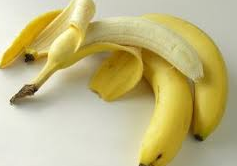Many supplements contain saturated fat as a hidden filler. What a tough, crazy world we live in. One could imagine the makers of vitamin and mineral supplements would be keen to create completely healthy and especially safe products. Yet it seems most have included, or is that disguised, a common source of saturated fat in their products.
So this week, what to look out for and what are the options, along with mention of coming retreats, but first
Thought for the day
Civility is beauty of behaviour.
It requires for its perfection
Patience, self-control, and an environment of leisure.
For genuine courtesy is a creation,
Like pictures, like music.
It is a harmonious blending
Of voice, gesture and movement, words and action,
In which generosity of conduct is expressed.
It reveals the man himself and has no ulterior purpose.
Rabindranath Tagore
Stearic Acid. Maybe you do not know much about it, but read your supplement labels and you are highly likely to find it listed amongst the ingredients. Having looked reasonably widely, I can report there is very little in the literature about this, very little in the Press, yet put simply, stearic acid is simply beef fat.
Stearic acid is one of the most common saturated fatty acids found in nature following palmitic acid. Its name comes from the Greek word “stear” that means tallow and while its most common source is indeed beef fat, another source is palm oil and we know how hard that is on the environment as well as being another saturated fat.
 Stearic acid is widely used in the production of detergents, soaps, cosmetics, shampoo and shaving cream.
Stearic acid is widely used in the production of detergents, soaps, cosmetics, shampoo and shaving cream.
It is also used with sugar and corn syrup to harden sweets (again – check labels).
However, stearic acid, particularly in the form of its magnesium salt, is also used widely to stop things sticking together.
This is important when making supplements as there is a need to have an easy flow and to prevent the various ingredients from sticking to equipment during mixing and compression.
So stearates make manufacturing faster, easier, and cheaper.
So apart from cost, there is no benefit to you.
In fact, the opposite may well be true. Take magnesium stearate as an example. It is not a source of effective dietary magnesium and has no known benefits, but is used in many supplements and is a saturated fat; the problems with which you will be well acquainted. Also, magnesium stearate may have a detrimental effect on your immune function as stearic acid has been linked to suppression of T cells. This filler also stimulates your gut to form a biofilm that can prevent proper absorption of nutrients from your bowel.
When I asked Prof George Jelinek what he does about this, he had this to say
These fillers are one of the many reasons I don't recommend supplements apart from vitamin D and flaxseed oil. The vitamin D I take is chosen for this reason, as it only contains vitamin D and cold pressed olive oil. It is HealthOrigins Vitamin D3 10,000IU. Just about all capsules with powder in them have these unhelpful ingredients.
Supplements are the ultimate in processed food in my view. It is one of the possible reasons the multivitamins and other specific supplements cause such an increase in mortality in the randomised controlled trials.
WHAT TO DO?
It comes back to this…
BUYER BEWARE
Know what to look for, read all your labels and make good choices.
When it comes to food, as much as possible, start with raw, organic ingredients so you know what you are getting. Supplements will never make up for poor quality food; eat well and be well!
NEWS
This week, Ruth and I will be teaching a keen bunch of meditation teachers how to present programs on contemplation and guided imagery - wonderful work. Then on 7th April, our annual pre- Easter meditation retreat commences and this year the theme is contemplation; so a delightful opportunity to once again delve into one of the most important life skills - contemplation.

April 7 – 13th Meditation in the Forest
There is not so much written on contemplation, and very few retreats on this specific topic, yet in my experience it is one of the most useful and profound elements to add to our practice. Ruth and I love presenting this retreat, and we love observing the benefits it brings to those who attend.
NEXT CANCER RESIDENTIAL PROGRAM
April 24 – 28th Cancer and Beyond
 For many people these days, living with cancer is an ongoing reality. So how to do that? How to live fully and well in the potential shadow of a major illness?
For many people these days, living with cancer is an ongoing reality. So how to do that? How to live fully and well in the potential shadow of a major illness?
It seems to me to be virtually essential to regularly take time out, to stand back, to re-assess, to keep on track, to get back on track when necessary, to clarify the confusion that is so easy to get into with all that is in the Press and on the net, and to perhaps most importantly, to be re-inspired and re- enthused for the journey ahead.
FULL DETAILS Click here
So this week, what to look out for and what are the options, along with mention of coming retreats, but first
Thought for the day
Civility is beauty of behaviour.
It requires for its perfection
Patience, self-control, and an environment of leisure.
For genuine courtesy is a creation,
Like pictures, like music.
It is a harmonious blending
Of voice, gesture and movement, words and action,
In which generosity of conduct is expressed.
It reveals the man himself and has no ulterior purpose.
Rabindranath Tagore
Stearic Acid. Maybe you do not know much about it, but read your supplement labels and you are highly likely to find it listed amongst the ingredients. Having looked reasonably widely, I can report there is very little in the literature about this, very little in the Press, yet put simply, stearic acid is simply beef fat.
Stearic acid is one of the most common saturated fatty acids found in nature following palmitic acid. Its name comes from the Greek word “stear” that means tallow and while its most common source is indeed beef fat, another source is palm oil and we know how hard that is on the environment as well as being another saturated fat.
 Stearic acid is widely used in the production of detergents, soaps, cosmetics, shampoo and shaving cream.
Stearic acid is widely used in the production of detergents, soaps, cosmetics, shampoo and shaving cream.It is also used with sugar and corn syrup to harden sweets (again – check labels).
However, stearic acid, particularly in the form of its magnesium salt, is also used widely to stop things sticking together.
This is important when making supplements as there is a need to have an easy flow and to prevent the various ingredients from sticking to equipment during mixing and compression.
So stearates make manufacturing faster, easier, and cheaper.
So apart from cost, there is no benefit to you.
In fact, the opposite may well be true. Take magnesium stearate as an example. It is not a source of effective dietary magnesium and has no known benefits, but is used in many supplements and is a saturated fat; the problems with which you will be well acquainted. Also, magnesium stearate may have a detrimental effect on your immune function as stearic acid has been linked to suppression of T cells. This filler also stimulates your gut to form a biofilm that can prevent proper absorption of nutrients from your bowel.
When I asked Prof George Jelinek what he does about this, he had this to say
These fillers are one of the many reasons I don't recommend supplements apart from vitamin D and flaxseed oil. The vitamin D I take is chosen for this reason, as it only contains vitamin D and cold pressed olive oil. It is HealthOrigins Vitamin D3 10,000IU. Just about all capsules with powder in them have these unhelpful ingredients.
Supplements are the ultimate in processed food in my view. It is one of the possible reasons the multivitamins and other specific supplements cause such an increase in mortality in the randomised controlled trials.
WHAT TO DO?
It comes back to this…
BUYER BEWARE
Know what to look for, read all your labels and make good choices.
When it comes to food, as much as possible, start with raw, organic ingredients so you know what you are getting. Supplements will never make up for poor quality food; eat well and be well!
NEWS
This week, Ruth and I will be teaching a keen bunch of meditation teachers how to present programs on contemplation and guided imagery - wonderful work. Then on 7th April, our annual pre- Easter meditation retreat commences and this year the theme is contemplation; so a delightful opportunity to once again delve into one of the most important life skills - contemplation.

April 7 – 13th Meditation in the Forest
NEXT CANCER RESIDENTIAL PROGRAM
April 24 – 28th Cancer and Beyond
 For many people these days, living with cancer is an ongoing reality. So how to do that? How to live fully and well in the potential shadow of a major illness?
For many people these days, living with cancer is an ongoing reality. So how to do that? How to live fully and well in the potential shadow of a major illness?It seems to me to be virtually essential to regularly take time out, to stand back, to re-assess, to keep on track, to get back on track when necessary, to clarify the confusion that is so easy to get into with all that is in the Press and on the net, and to perhaps most importantly, to be re-inspired and re- enthused for the journey ahead.
FULL DETAILS Click here










